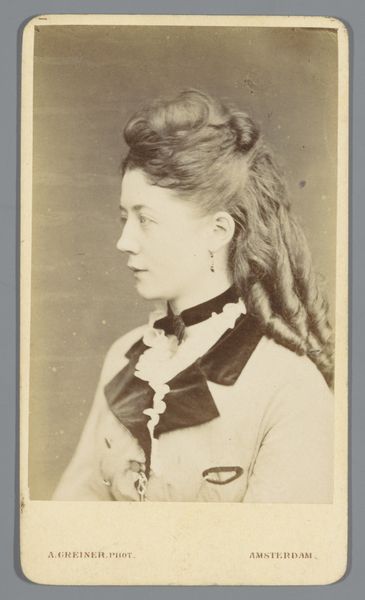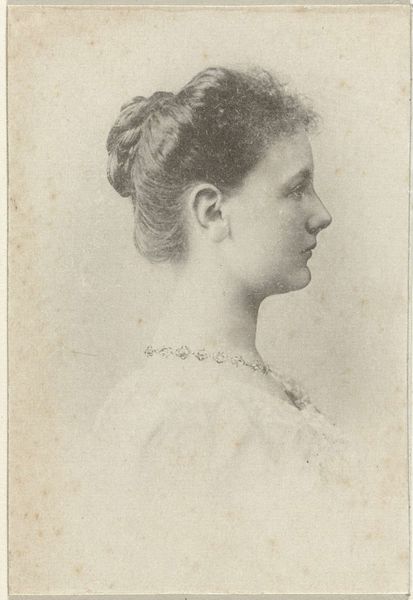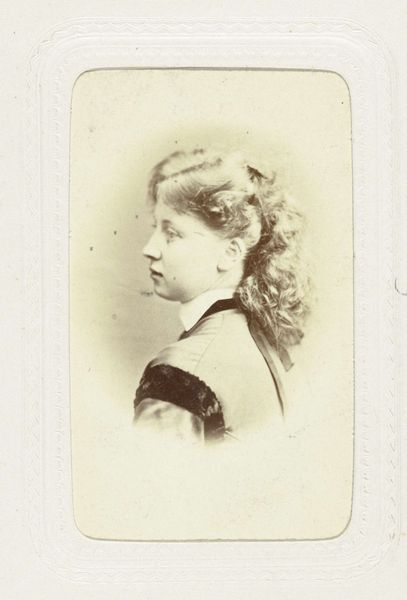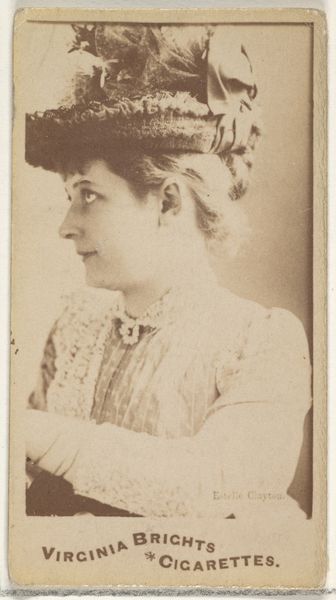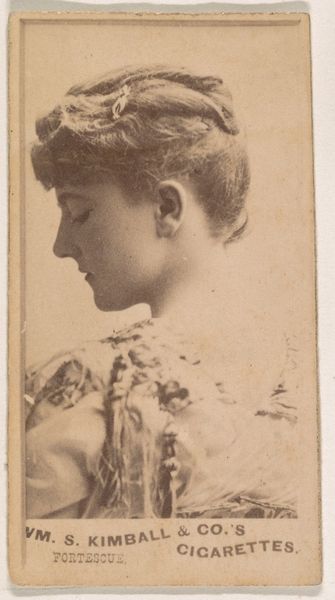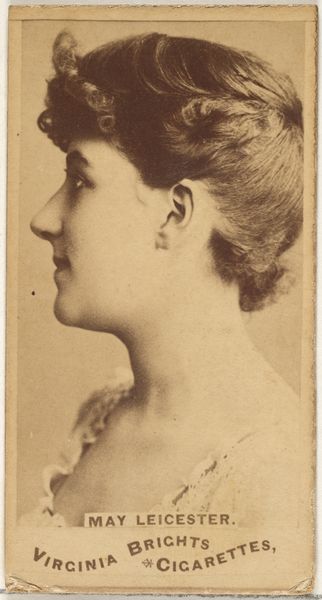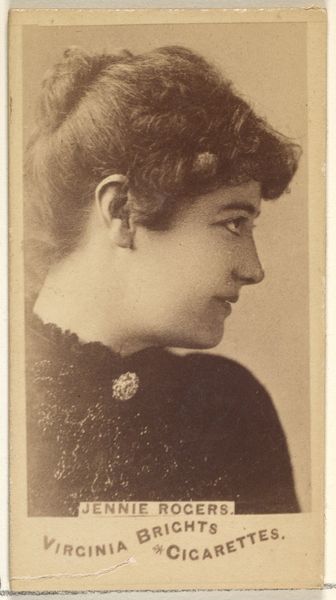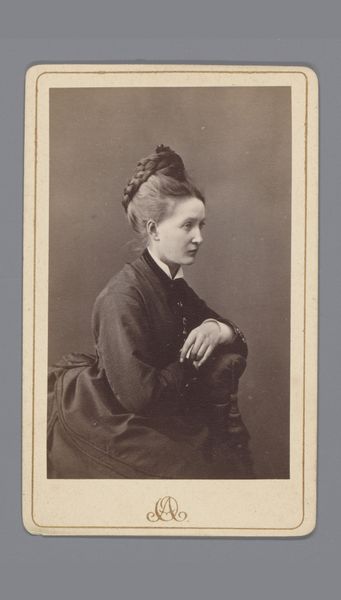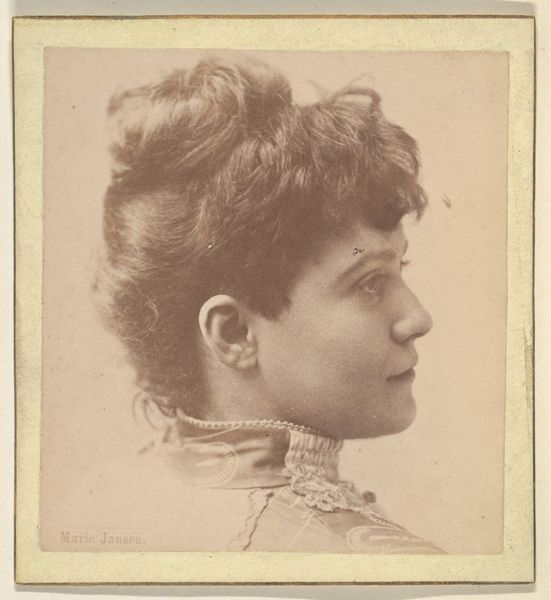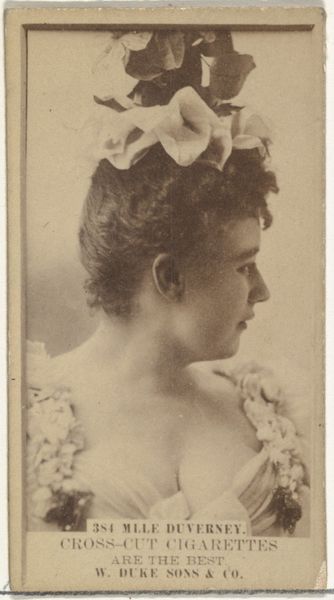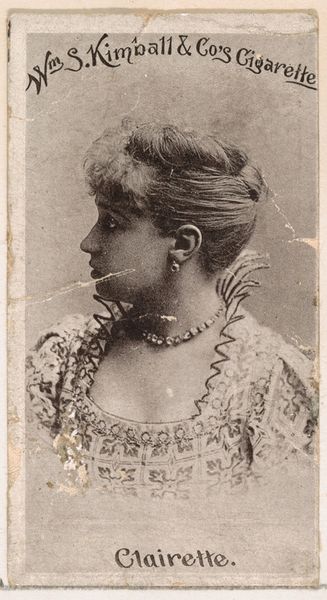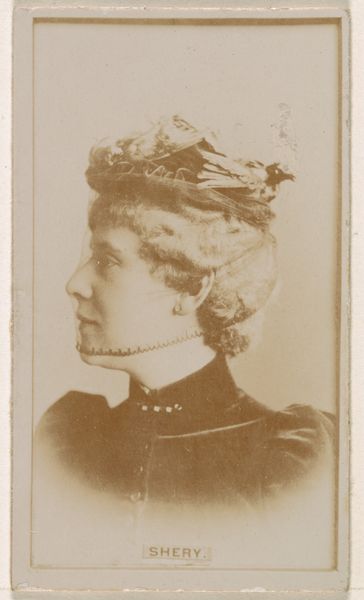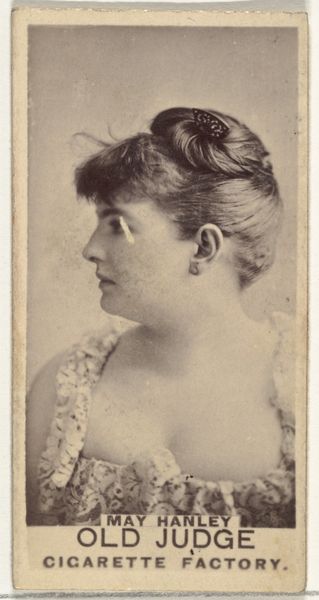
photography
#
portrait
#
16_19th-century
#
caricature
#
photography
#
portrait art
#
realism
Dimensions: height 105 mm, width 61 mm
Copyright: Rijks Museum: Open Domain
Curator: Let’s discuss this photograph by Johannes Baer, dating from about 1865 to 1870, simply titled "Portret van een vrouw"—Portrait of a Woman. Editor: Immediately, what strikes me is the pose. That severe profile view—almost feels like a silhouette against the stark backdrop. Austere, wouldn’t you say? Curator: Precisely. Studio photography in this era had a performative aspect. The sitter and photographer consciously collaborated to construct an image. Notice the subject’s clothing, very simple yet neat, appropriate and respectable for the public display implied by photographic portraiture. Editor: But also look at how this is staged to obscure. Almost like a game of hide-and-seek. Hair piled atop her head, emphasizing her exposed neckline. I find this portrait revealing, yet carefully guarded. A paradox. Curator: True. Portraiture wasn't just about likeness. It was deeply embedded in the societal rituals of the 19th century. As photography became more accessible, the new technology redefined status and image. Think of it in terms of consumption: portraiture moved out of the realm of painting affordable to the wealthy, towards an aspiring middle class hoping to project a certain self-image through photography. Editor: Photography served as a social mirror, both reflecting and shaping desires. Makes me think, how did *she* feel, being scrutinized, reduced to a visual artifact by some… apparatus? Maybe her restraint is rebellion. Curator: Photography provided this access, yet also trapped people within certain rigid parameters. The duration of a photograph meant people would carefully select their poses to appear poised and graceful for posterity, although maybe such rigidity, particularly of class or even gender, has its opposite—an invitation to creative dissent, an invitation that has not gone unheard as photography matured. Editor: Yes, and in a strange twist, Johannes Baer created art using…a machine. Isn't it deliciously subversive? A dance between industry and something we can all relate to--human emotion. Thank you for unlocking its secrets, these images make one contemplate time and identity in general. Curator: Exactly. Perhaps that’s the lasting power of such works like these; their role as visual prompts that invites the audience into a prolonged negotiation.
Comments
No comments
Be the first to comment and join the conversation on the ultimate creative platform.
